Monday, December 19, 2011
Sunday, December 11, 2011
Monday, November 28, 2011
Saturday, November 05, 2011
Thursday, November 03, 2011
Monday, October 31, 2011
10.10 Sports Day Trip To Tsuruga #3
10.10 Sports Day Trip To Tsuruga #3, a photo by sleepytako on Flickr.
Monday, October 24, 2011
10.10 Sports Day Trip To Tsuruga #2
 |
| Pigeons hanging out, being pigeons. |
Tuesday, October 18, 2011
Monday, October 17, 2011
10.10 Sports Day Trip to Tsuruga #1
Teenagers walking through the tunnels of Tsuruga station on Sports Day, 2011.
Monday, October 03, 2011
08.02 Anaoji Garden
08.02Anaoji-2, a photo by sleepytako on Flickr.
Taking photos of Japanese gardens is hard. So many people do it so well and that's all they do. I just liked the red carpet.
Taking photos of Japanese gardens is hard. So many people do it so well and that's all they do. I just liked the red carpet.
Wednesday, September 28, 2011
08.02 Anao-ji 穴太寺
08.02Anaoji-1, a photo by sleepytako on Flickr.
Mama washing Mia's hands before going to the temple to pray.
Anao-ji temple, Kameoka city, Kyoto Pref.
Sunday, September 25, 2011
Friday, September 23, 2011
Looking Back #4 Estate - Lincon, Montana
I lived in Montana for 6 months or so with my old film camera, a laptop, a shortwave radio and my green Dodge Dakota. Took some classes at the University of Montana. Learned how to drive in the snow. Learned that it's cold up there. Moved to Tucson.
Wednesday, September 21, 2011
Symbols for Large and Small
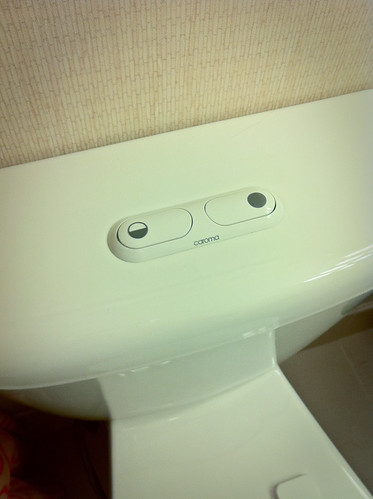 |
| A toilet in the LAX Marriott - August, 2011 |
Most Japanese toilets have a two way flushing mechanism
allowing the user to choose between large, marked with the kanji 大, or
small, marked with 小. It
seemed natural. It’s a great way to save water and money. Why hadn’t these toilets
been introduced in Tucson or Los Angeles where water is scarce? A definite problem
would be what symbols to use for 大 and 小.
My problem, as the solution
in the photo shows, was that I was trying to do a direct translation of 大 to
large and 小 to small. I failed to consider the mechanics
of the device itself. Large would flush the entire tank while small would flush,
more or less, half.
For more about human/landscape/object relations see: Future Perfect.
Sunday, September 11, 2011
09.04 Morning Beer and Betting
09.04MorningBeerandBetting-1, a photo by sleepytako on Flickr.
A good morning happoshu to get ready for a day at the track.
Tuesday, August 16, 2011
Looking Back #3 Imperial Food Market
Throughout 2003-2005 I spent a lot of time in Imperial County, CA trying to understand it. Imperial Co is one of the most agriculturally important regions to the USA providing vegetables throughout the winter. It's dreadfully hot in the summer. It's polluted by pesticides and fertilizers. It hosts the southern half of the man-made Salton Sea and one of the best hot springs in the nation. It's towns act as Afghanistan for Hollywood's location scouts.
The region has a great many left over or under maintained commercial buildings that my lens gravitated towards. I loved this font and motif. No clue what use to be on the top. Perhaps a logo for a cola or brand of bread.
P.S. I'm posting this at 6AM PST as I sit, jet-lagged, in a Los Angeles hotel room. It's fun and interesting being back in the USA. Massive amounts of reverse culture shock going on. I'm documenting the trip over on my baby daughter's blog. It's her first trip to the states. Needless to say, she won't remember it, but one day into the trip and she's been having a ton of fun.
The region has a great many left over or under maintained commercial buildings that my lens gravitated towards. I loved this font and motif. No clue what use to be on the top. Perhaps a logo for a cola or brand of bread.
P.S. I'm posting this at 6AM PST as I sit, jet-lagged, in a Los Angeles hotel room. It's fun and interesting being back in the USA. Massive amounts of reverse culture shock going on. I'm documenting the trip over on my baby daughter's blog. It's her first trip to the states. Needless to say, she won't remember it, but one day into the trip and she's been having a ton of fun.
Monday, August 15, 2011
Xingiang Time @ Myopic
Check out my great friend Hannah's trip to the Xinjiang region of western China. Beautiful, complicated, intriguing countryside photographed in the most amazing way.
Via Flickr:
Assalamu Alaikum!
We spent two weeks on six 8-24 hour buses circling and crossing the Taklimakan Desert in Xinjiang, the farthest west province in China. Here's our picture story.
"Xinjiang Time" www.myopic.us/xinjiangtime
Sunday, August 07, 2011
Burger King has Come to Kansai
Burger King has returned to Kansai, but it's really not too much to talk about.
I went by on a Saturday or Sunday (can’t remember, too lazy to look up) assuming to be in a super long line, but found the wait to be a few minutes. Nothing more than a typical McDonald's on the weekends.
The burger tasted like a Burger King burger. Nothing too special. You’re able to customize the burger to a degree. I added the mustard and that was nice. Perhaps the best thing about the whole meal. You can see the menu here.
The fries were fine. I remember 10 years ago (or more) when BK changed their fries to these buttery popcorn tasting things. I hated them and I quit eating at BK for that reason. It was nice to find out that these fries were different. I also got the cheese potato nuggets. Not too bad, but exactly the same as the cheese potato things from DomDom burger.
The restaurant is quite small to say the least with a well shut off smoking area. Three tables against the far wall had iPod jacks and directional speakers allowing you to choose your own music following with the theme of “choice” in their menu.
All in all not too much to report. It’s a chain burger joint. Make sure to check their website for coupons before you go.
Open 24 hours.
Located near the Bic Camera in Namba.
Map
Coupons
More Burgers on Sleepytako:
http://sleepytako.blogspot.com/2009/10/nishinomiya-city-of-hamburgers.html
August J・Festa (BlogMatsuri) "Food in Japan" @ Japingu:
http://japingu.com/2011/08/01/j-festa-august-2011-theme/
Thursday, July 21, 2011
Hyogo: More on Meibutsu
 |
| A larger PDF of this page is available here |
A few of the generally known ones were there:
- Octopus たこ from Akashi
- Beef 肉用牛 from, well, all over the prefecture
- Onions たまねぎ in Awaji
- Tanba Black Beans 丹波黒 in Tanba, although they put the picture in Taijima and Harima also.
- Crab かに in Taijima
- Chrysanthemums きく in Settsu
- Eggplant なす in Tanba
- Figs いちじく in Settsu
~ Bonus geography lesson ~
The internal divisions of Hyogo that follows the pre-Meiji era boundaries more or less are as follows:([name in kanji]:[color on map])
- Settsu (摂津: green) is the area that consists of the urban Hanshin area centered around Kobe and including Nishinoimya. Where I live.
- Harima (播磨: orange) is the area of mixed rural and industrial use land spanning from Settsu to the Okayama prefecture border centered around Himeji. Spanning the coast from Akashi to Ako.
- Tanba (丹波: blue)is the rural agrarian highlands that are above the Keihanshin (Kyoto-Osaka-Kobe) urban area. Centered around the town of Sasayama.
- Tajima (但馬: pink) consists of Hyogo's Japan sea coast and the agricultural areas in in the northern reaches of the prefecture. Centered around the city of Toyooka and the onsen town of Kinosaki.
- Awaji (淡路: purple) consists of the agricultural island between Hyogo and Shikoku. This area has only recently seen a boom thanks to the Awaji bridge built in the 90's.
Tuesday, July 12, 2011
Japanese Landsape: City of Bags - Toyooka
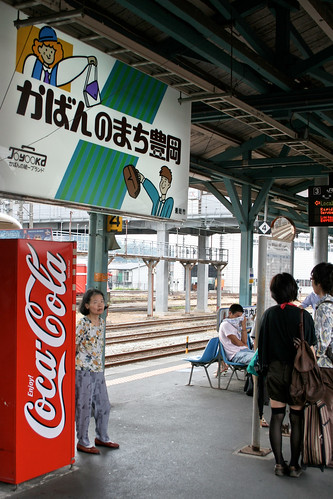 |
| Toyooka Station 豊岡駅, 2006 |
In this photo taken in the Summer of 2008 on a short train trip up to Kinosaki Onsen I stopped in Toyooka to change trains. There was this prominently placed sign stating:
かばんのまち豊岡
City of Bags - Toyooka
Bags! Toyooka (豊岡市) the largest city in northern Hyogo, closer to the Japan Sea coast than to fashionable, designer brand loving Kobe is famous for bags? It seems so improbable, but bags have to be made somewhere I supposed. After returning I asked my Japanese co-workers and friends and all of them knew that Toyooka was famous for bags.
A quick Japanese Wikipeida search reveals that the origin of the Toyooka bag goes back to the 8th century. Wicker trucks were produced using the plentiful willows that grew in the head waters of the Maruyama river that flows through the city. In modern times the Toyooka trunks were first presented to the world in during an expo in 1881. Later in 1917 the trunks were improved by coating them with lacquer and fitting them with locks. The development then turned away from wicker to fiber and then synthetic fiber bags. Production of bags and trunks has continued to today and the city prominently features them as the first two items in it’s English language tourist website.
So Toyooka is famous for bags. Almost every city has some sort of mebutsu. What’s your city’s mebutsu? What’s the strangest mebutsu you’ve seen?
A more in-depth discussion of the marketing and development of mebutsu can be found here.
Monday, July 11, 2011
Looking Back #2 - Recycled Roadrunner
 |
| It's a bird, it's a plane, it's... well... it's just a bird. A roadrunner to be exact. |
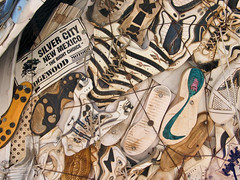 On the lonely I-10 trucking east through a bit of New Mexico before the long hard stretch of Texas looking out over the Rio Grande is a statue of the state bird, the majestic desert dweller known as the roadrunner... made entirely of trash from a closed landfill. Installed sometime in 2000, Roadside America's readers report that the creator is a mystery, but that it originally was built at the city dump where the bird's "contents" came from and then moved to it's present location.
On the lonely I-10 trucking east through a bit of New Mexico before the long hard stretch of Texas looking out over the Rio Grande is a statue of the state bird, the majestic desert dweller known as the roadrunner... made entirely of trash from a closed landfill. Installed sometime in 2000, Roadside America's readers report that the creator is a mystery, but that it originally was built at the city dump where the bird's "contents" came from and then moved to it's present location. 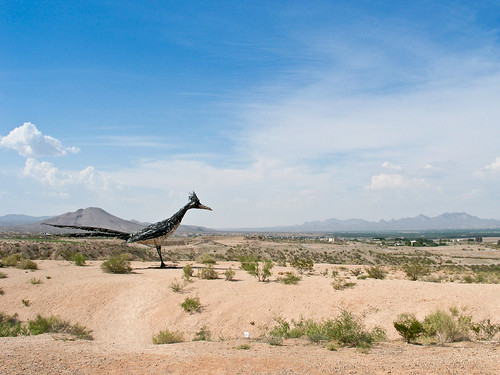 |
| Ever vigilant, looking out over the city of Las Cruces. |
Location: The roadrunner is located on a scenic overlook only accessible by the eastbound lanes of the I-10 as you come into Las Cruces.
Price: Free
Sunday, July 03, 2011
My Local Bar: The Wexford Tavern
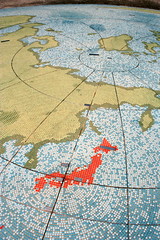 Recently I was asked by Kaley about my favorite place in Japan. This is a hard question. A very hard question for a geographer like myself. The first thing that came to mind were a few of my favorite onsen and sento. I have a site full of them for god-sakes! Then I thought about some of my favorite train stations scattered across rural Japan. What about the temples? None of these single sites however encapsulated my experience here on their own. For Kaley, and you, I wanted to choose a location that I could say has been a massive positive effect on my life and my view of Japan. A place that I hope you could find in your neighborhoods.
Recently I was asked by Kaley about my favorite place in Japan. This is a hard question. A very hard question for a geographer like myself. The first thing that came to mind were a few of my favorite onsen and sento. I have a site full of them for god-sakes! Then I thought about some of my favorite train stations scattered across rural Japan. What about the temples? None of these single sites however encapsulated my experience here on their own. For Kaley, and you, I wanted to choose a location that I could say has been a massive positive effect on my life and my view of Japan. A place that I hope you could find in your neighborhoods.I often cannot understand how people living here can complain so much about the country on the various gaijin blogs and message boards. Why don’t I complain like that? Why am I immune to the problems that bother many other fellow foreigners here? A lot of it has to do with mindset and language ability I can imagine, but, very important, is having a sense of community in the place you live. And this, I must add, is independent of Japan but a worldwide phenomenon. Community is important. I’ve lived in an apartment building where I never knew my neighbors. It’s not that appealing and somewhat dangerous.
So where do I find that Community? My local bar: The Wexford Tavern or The Wex as it’s known. Ever since moving to Japan I’ve been going there. The first location was a small 10 seat counter on the first floor of the owner’s house. It was there that I first met Yuko who would later become my wife and the mother to our daughter Mia. Just that fact would should put The Wex as my most important place in Japan. When we got married a few years after that first meeting we also had our wedding party at the bar. It seemed appropriate as most of the people we invited were also regulars or at least sometime customers.
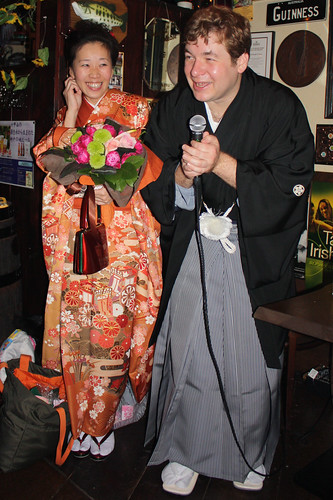 |
| Our Wedding Party |
The community at the Wex has beginning language learners to masters of English, Japanese, and a few more languages. It’s a place where you can try out your foreign language ability--a place many of my college students are looking for, but I’m not at liberty to tell them. You’ll often hear someone yelling across the bar how do you say this or that since at least one person there would know. One of the regulars really began speaking English at the Wex and now he comes in and is blabbering on in English to the point that new customers think he’s Filipino! I’ve learned by watching him that the ample usage of the F word is the key to sounding like a native speaker.
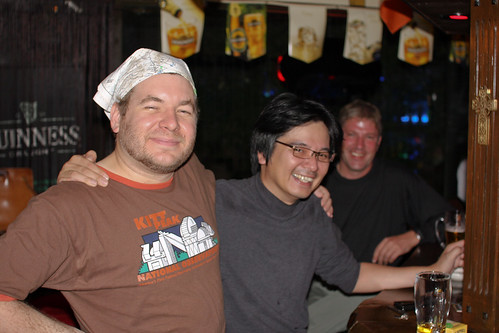 |
| Back when I had a beard. |
The Wexford Tavern has played an important part of my life here in Japan and Nishinomiya. Without The Wex my neighborhood would be a totally different place. I’d really, actually consider moving to Shimane or Kagoshima rather than just blow hot air about it. If you’re in the neighborhood, by all means come up and have a drink. I’m sure you’ll have a good time.
www.wexfordtavern.jp
Access
Open from 6PM, 7 days a week.
Tuesday, June 21, 2011
Looking Back #1 - No Pallet Parking
06.23palletparking-1, a photo by sleepytako on Flickr.
Prior to coming to Japan, I lived in Tucson, AZ. This photo was taken on June 23, 2005 almost exactly 6 years ago. Judging by the clouds it was a hot, hot day in Tucson. Much like today here in Amagasaki where I write this post. The heat is different back in Arizona. It's dry. It feels different on the skin. Japan is much more sticky.**Looking back is going to be an irregular post from my pre-Japan (pre-Flickr) photography of the deserts and detritus of the western United States.
Sunday, June 12, 2011
Matsumoto Dentetsu (Alpico Kotsu) - Kamikochi Line | 松本電鉄 (アルピコ交通) 上高地線
For a traveler, a landscape geographer and anyone who wonders what’s around the corner, Japan is one of the best countries to live or travel in. Despite it’s size, as compared to my birthplace in America, there is a such an outstanding variation in the landscapes both natural and cultural cramped into such a small place. What makes it even easer to explore is the abundance of public transportation thanks to it’s population density. The massive national railways, Japan Rail, of course, covers the most territory, but the complementary private railways are also quite interesting. In the major population areas around Osaka and Tokyo many private lines are in direct competition with JR, but in the rural areas these private lines feed into or supplement the JR lines. Some of them were even former JR lines that were sold off to local municipalities or companies. I’ve discussed the Miki, Hojo, Shigaraki, and Ohmi lines previously and rode on many more, but as I’ve been pouring over the Railway Mapple I’ve discovered many, many more of these lines that I never knew existed. More than I expected in fact.
Matsumoto Dentetsu 松本電鉄 or Alpico Kotsu アルピコ交通 as it has been renamed earlier this year is one of these spur lines that feed into the JR system. The single Kamikochi line travels west form Matsumoto in Nagano Pref. towards the popular ski and hot spring area of Kamikochi. I was given a chance to ride the line during a family weekend trip to see one of my wife’s friends from her study abroad program in Vancouver, BC. Thank you Yuko for letting me dork out on the trains for the afternoon, by the way.
The single line begins at platform 7 of JR Matsumoto station and ends 14.4km later at Shin Shimashima Station. Yes, 新島々駅, how’s that for a name. From the terminus hikers in spring and summer and skiers when there’s snow pack onto busses that take them further into the mountains.
After being dropped off by Yuko I was able to ride one way into Matsumoto from the terminus on the one-man train. Leaving Matsumoto station I had to show my simple paper ticket to the JR attendant as the majority of passengers went through the automatic turnstiles. It’s a testament to how well the public transit system works in Japan that it allows this dual use of the JR station by the private line.
At the beginning of the trip the train was only 15% full or so, but nearing Matsumoto it became quite packed leaving some people standing. Originally, I was worried that this line wasn’t getting enough ridership, but it seems the people from the suburbs, students, tourists and hikers can really fill up the two cars. The line hugged the southern hills that made up the valley that the train travels through. Sometimes the tracks would hug the slope of the valley as it passed around the houses and other development rather than travel through it. There were some uniquely placed stations thanks to this.
While not the prettiest of lines that I’ve been on, it was, for the most part, an enjoyable ride. I can imagine in winter with the snow on both sides the view must be quite magnificent as this photo from the Kamikochi line’s Wikipedia entry illustrates.
These third party lines give the casual traveler to the massive train dork a great affordable way to relax and experience the landscape and get to see a decent cross-section of the people who live in that landscape. Given the chance, I couldn’t recommend riding these local private lines more, the Kamikochi line included.
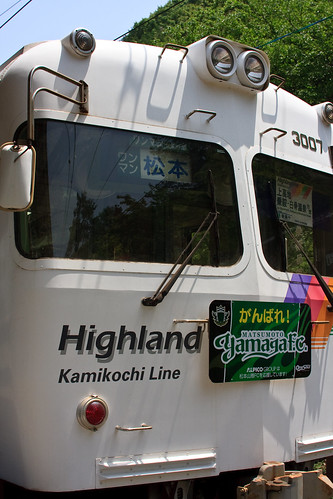 |
| The Front of a "Highland Rail" car with a sign promoting the local soccer club |
The single line begins at platform 7 of JR Matsumoto station and ends 14.4km later at Shin Shimashima Station. Yes, 新島々駅, how’s that for a name. From the terminus hikers in spring and summer and skiers when there’s snow pack onto busses that take them further into the mountains.
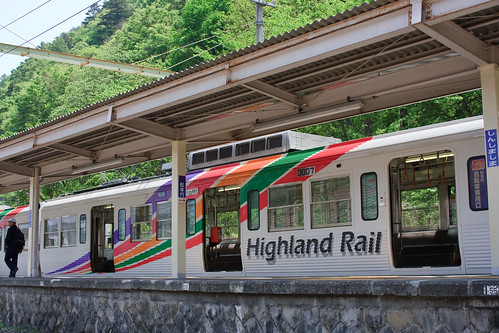 |
| Shinshimashima Station |
After being dropped off by Yuko I was able to ride one way into Matsumoto from the terminus on the one-man train. Leaving Matsumoto station I had to show my simple paper ticket to the JR attendant as the majority of passengers went through the automatic turnstiles. It’s a testament to how well the public transit system works in Japan that it allows this dual use of the JR station by the private line.
At the beginning of the trip the train was only 15% full or so, but nearing Matsumoto it became quite packed leaving some people standing. Originally, I was worried that this line wasn’t getting enough ridership, but it seems the people from the suburbs, students, tourists and hikers can really fill up the two cars. The line hugged the southern hills that made up the valley that the train travels through. Sometimes the tracks would hug the slope of the valley as it passed around the houses and other development rather than travel through it. There were some uniquely placed stations thanks to this.
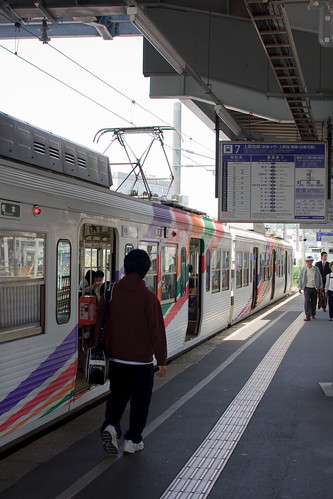 |
| Matsumoto Dentetsu's platform at JR Matsumoto station |
These third party lines give the casual traveler to the massive train dork a great affordable way to relax and experience the landscape and get to see a decent cross-section of the people who live in that landscape. Given the chance, I couldn’t recommend riding these local private lines more, the Kamikochi line included.
Saturday, June 11, 2011
The Azusa River Tepco Hall, near Matsumoto, Nagano.
Something tells me that Tepco will have to change it's logo. It's hard to imagine that the company will be able to stay around without a major image change. Even now that logo looks like a made up one for an evil company from a movie set in a Terminator-like dystopian future.
Taken through the window of the closed Asukakawa Tepco-kan, a science museum and Tepco PR spot that was closed indefinitely after the earthquake.
Taken through the window of the closed Asukakawa Tepco-kan, a science museum and Tepco PR spot that was closed indefinitely after the earthquake.
Tuesday, June 07, 2011
Matsumoto Pottery Shop
05.21MatsumotoPottery-1, a photo by sleepytako on Flickr.
Loved the old store front here right down to those green tiles. I sucked some of the contrast and saturation out of the photo with Lightroom for effect. This is the first in what will be a few posts and photos from our little trip to Nagano.
Sunday, June 05, 2011
Thursday, June 02, 2011
Ohmi Tetsudo #2
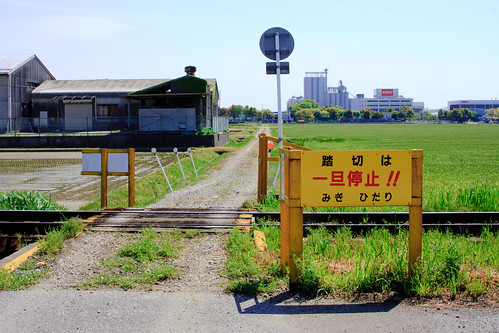
Shiga, where the Ohmi Tetsudo runs, reminds me a bit of San Deigo and Imperial counties along the Mexico / California border in the USA. The rural-industrial use of the land. Factories and factory farms to the large population of Brazilian-Japanese who work in those factories.
I thought this photo with the Kirin brewery in the background, the farm outbuildings in the middle-ground and the Ohmi Tetsudo line in the foreground did a good job of encapsulating this part of Shiga.
The Ohmi line shown is the Taga line that travels 2.5km towards the mountains from the Ohmi main line. One of the two stops on the line has the odd and rare name in katakana スクリーン (Screen), The station is named after the factory it serves and is located in front of: Dai-Nippon Screen MFG. CO..
Wednesday, June 01, 2011
Wednesday, May 25, 2011
Engyoji Shoshazan 円教寺 書写山
Engyoji is the main temple at Shoshasan a few minutes drive, cable car, and walk north of Himeji Castle. This gorgeous temple is part of the Western Japan 33 temple route and is also famous for being a filming location for "The Last Samurai." I've never seen the film and I don't have any desire to, but it brings in many tourists. The temple and environs are totally worth the beautiful 1km uphill hike from the cable car terminal.
Sunday, May 01, 2011
Wednesday, April 13, 2011
The Sunset In Ako
03.28AkoSunset-1, originally uploaded by sleepytako.
The wonderful view from the Ginpaso ryokan in Ako, Hyogo.
Quakebook
I saw the original call for submissions for this Twitter sourced book of writings about the Tohoku earthquake and started to write something. Sadly, I never submitted my piece, but many writers--who are much better than I--did! 100% of the revenues go directly to the Japanese Red Cross for earthquake relief. I'm getting my copy later tonight. I hope you consider getting a copy yourself.
More info on the Quakebook blog: http://www.quakebook.org/
Or on twitter: #quakebook
More info on the Quakebook blog: http://www.quakebook.org/
Or on twitter: #quakebook
Saturday, April 09, 2011
The tools of a pilgrim
03.29ichijoji-tools-1, originally uploaded by sleepytako.
Hair dryer for drying the ink on your tapestry, wooden block to hold the tapestry from rolling up, and sheets of scrap paper to put over the drying ink.
一乗寺、加西市、兵庫県
Ichijo-ji, Kasai, Hyogo
March 29, 2011
一乗寺、加西市、兵庫県
Ichijo-ji, Kasai, Hyogo
March 29, 2011
Monday, April 04, 2011
Ichijo-ji 一乗寺
A note to my readers: I am returning to blogging as usual in part as an effort to show to the world that the rest of Japan is getting on after the recent disaster. Our hearts and prayers are with the people in Tohoku--of course. That said, we cannot be in mourning forever. For the country to recover--mentally and economically--we need to return to normality as soon as we can in the areas unaffected by the earthquake. If there is one thing the Japanese can do best, it's their ability to bounce back after extreme trauma. Despite what you might be seeing in the foreign news media, people in Kansai and throughout Japan are living their lives going to work and enjoying this lovely time of year. Please join me in remembering the suffering of those in Tohoku while celebrating the beauty of this country that I call my home.
Along the Saikoku 33 Temple route in Kansai there are many temples. Some of them are in, or close to, major population centers and are attractions irregardless of their designation in the Saikoku 33. Others are in out of the way places tucked into tall mountains. Some are in some not so easily accessible places. While every temple offers a sense of beauty and transcendence, I have to say I enjoy the peacefulness of the latter. Ichijo-ji in rural Kasai city is a stellar example of one of these temples.
Ichijo-ji is located not far from Kakogawa-kita IC on the Sanyo highway up a winding road and just past a newly built pet cemetery. The temple is at the end of a long set of stairs nestled into the surrounding mountains. It is said to have been founded in 650 B.C.E. The oldest remaining building is a 5-story pagoda built in 1171. The pagoda is registered as a national treasure.
After climbing up the stairs, with my smiling 10 month old daughter strapped to my chest I might add, Yuko and I removed our shoes and entered the main temple. The cool wood boards, made smooth by the hundreds of feet that have walked upon them, felt great on our feet.
Inside the cool mountain air circulated through the building and spreading the incense around the building. The calm and quiet was omnipresent. This truly is a spiritual place.
With all the sadness and suffering in Japan and the world around us at this time, taking time out to offer a silent prayer is the least we can do.
Ichijo-ji 一乗寺 Data:
Address: 821-17, Sakamoto, Kasai, Hyogo 675-2222 / 兵庫県加西市坂本町821-17 [ Google Map ]
Links: [ Wikipedia ] [ Hyogo Tourism ] [ Sacred Japan ]
Sunday, April 03, 2011
Sakuragumi Restaurant - Ako
¥3,670 sounds like a lot for a lunch. At least for me! That's an expensive lunch. As soon as we finished the appetizer plate however, we felt like we had gotten our money's worth. Everything from then--pasta, pizza, main dish, dessert, coffee--just kept on astonishing Yuko and myself.
Sakuragumi is a southern Italian style restaurant in the little seaside community of Ako. This small town is better known for the tale of the 47 Ronin and salt production--the latter being used in most of Ako's omiyage including the great shiomi manjyu sold through out the city. The seaside walk and landscape is somewhat reminiscent of Italy, and my home town of Laguna Beach come to think of it. Combine the beautiful landscape with the restaurant's location on a small cliff overlooking the ocean, and furnishings in the restaurant itself with the food and you actually might think you were in Italy. Outside and in, Sakuragumi is designed to give you the sense that you are no longer in Japan. High airy ceilings, white walls, large wooden tables all come together to help produce this feeling.
The food is just amazing. Our appetizer plate came with 5~6 different bits of seafood, vegetable and meat based delicacies. All of them very nicely arranged on a large plate for us to share. After that a pizza came, the restaurant's specialty, and a pasta made with locally caught shellfish. The pizza, like the restaurant, doesn't cater to Japanese tastes as it was heavy on blue cheese. A possible deal breaker for some Japanese patrons. The pasta was also cooked al dente--a great change from what I'm use to here in Japan. We chose a meat dish and got a pork roast with peppercorns and salad. The pork was slightly crispy on the outside while the inside the meat almost melted in my mouth. All of it was perfect.
All in all one of the top five best meals I've ever had, and at ¥3,670 a head it was a steal. Combine all this with a pleasant, friendly staff a great drink menu that included a nice list of Japanese micro-brews and you've got a real culinary delight.
Reservations are necessary. We made ours two weeks in advance and the restaurant was full the entire time we were there. They had to turn away quite a few walk-ins too. If you can't get a reservation, they seemed to be doing take out pizza. I didn't ask about it however. We also brought our 10 month old baby and they were very accommodating to her. The couples at the tables next to us all enjoyed smiling at waving at her too. A great experience
Sakuragumi website [Japanese]: http://www.vera-pizza-sakuragumi.co.jp/
Sakuragumi is a southern Italian style restaurant in the little seaside community of Ako. This small town is better known for the tale of the 47 Ronin and salt production--the latter being used in most of Ako's omiyage including the great shiomi manjyu sold through out the city. The seaside walk and landscape is somewhat reminiscent of Italy, and my home town of Laguna Beach come to think of it. Combine the beautiful landscape with the restaurant's location on a small cliff overlooking the ocean, and furnishings in the restaurant itself with the food and you actually might think you were in Italy. Outside and in, Sakuragumi is designed to give you the sense that you are no longer in Japan. High airy ceilings, white walls, large wooden tables all come together to help produce this feeling.
The food is just amazing. Our appetizer plate came with 5~6 different bits of seafood, vegetable and meat based delicacies. All of them very nicely arranged on a large plate for us to share. After that a pizza came, the restaurant's specialty, and a pasta made with locally caught shellfish. The pizza, like the restaurant, doesn't cater to Japanese tastes as it was heavy on blue cheese. A possible deal breaker for some Japanese patrons. The pasta was also cooked al dente--a great change from what I'm use to here in Japan. We chose a meat dish and got a pork roast with peppercorns and salad. The pork was slightly crispy on the outside while the inside the meat almost melted in my mouth. All of it was perfect.
All in all one of the top five best meals I've ever had, and at ¥3,670 a head it was a steal. Combine all this with a pleasant, friendly staff a great drink menu that included a nice list of Japanese micro-brews and you've got a real culinary delight.
Reservations are necessary. We made ours two weeks in advance and the restaurant was full the entire time we were there. They had to turn away quite a few walk-ins too. If you can't get a reservation, they seemed to be doing take out pizza. I didn't ask about it however. We also brought our 10 month old baby and they were very accommodating to her. The couples at the tables next to us all enjoyed smiling at waving at her too. A great experience
Sakuragumi website [Japanese]: http://www.vera-pizza-sakuragumi.co.jp/
Subscribe to:
Posts (Atom)
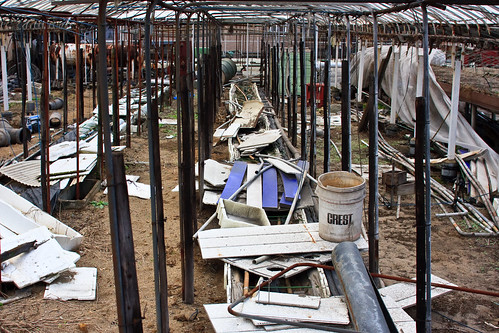
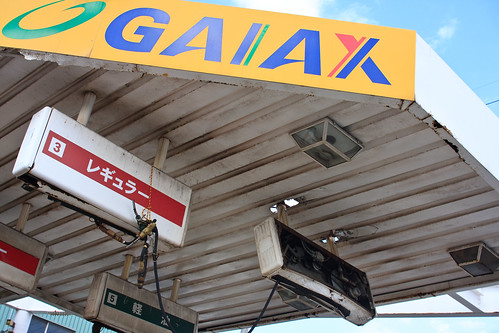
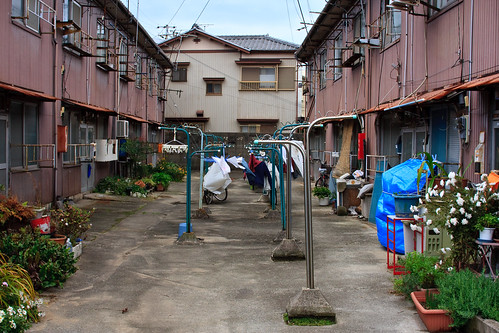
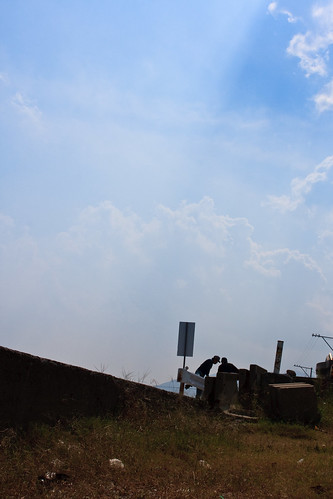

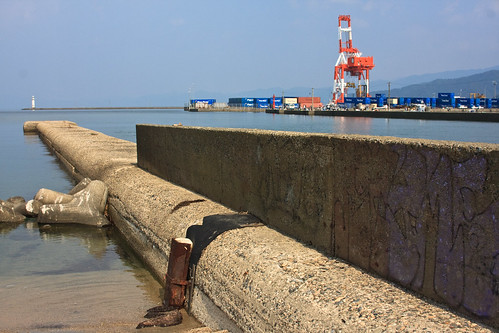
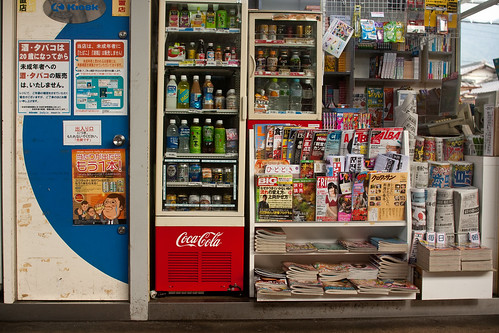
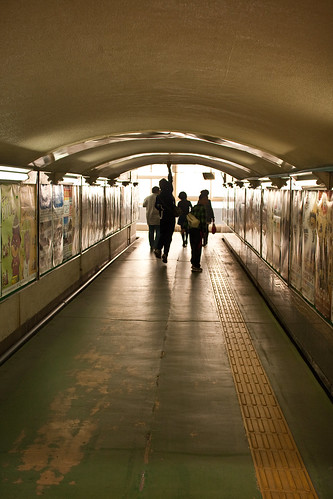
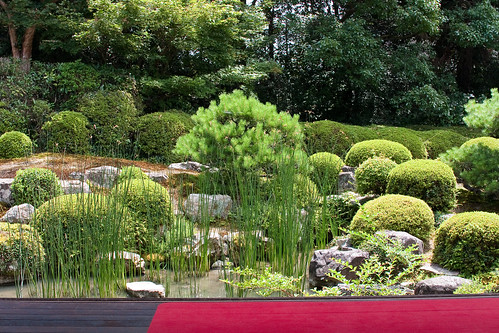
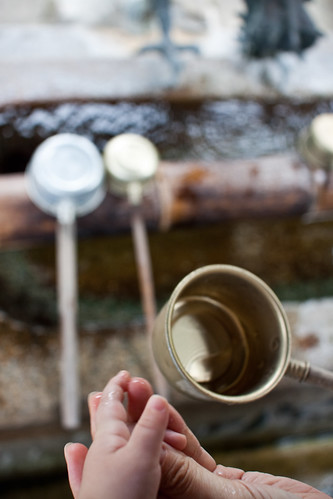
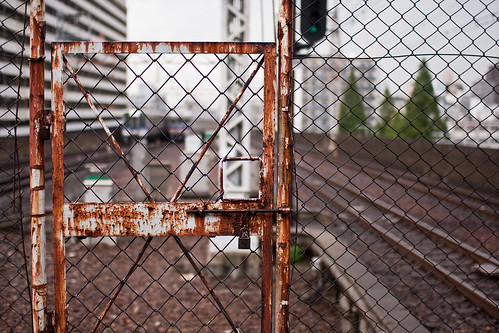
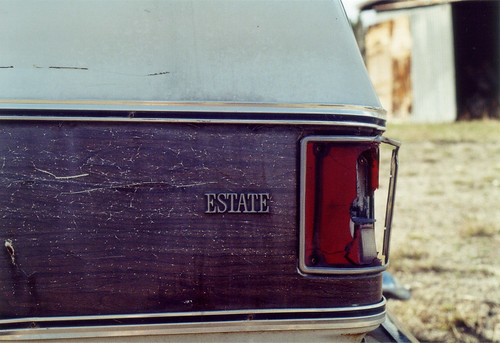
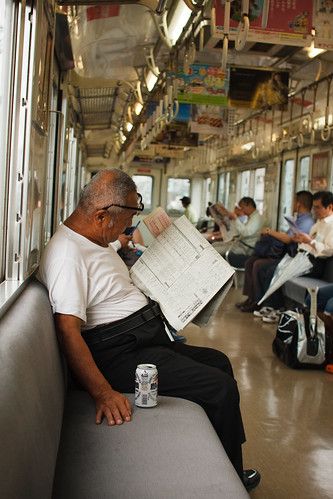
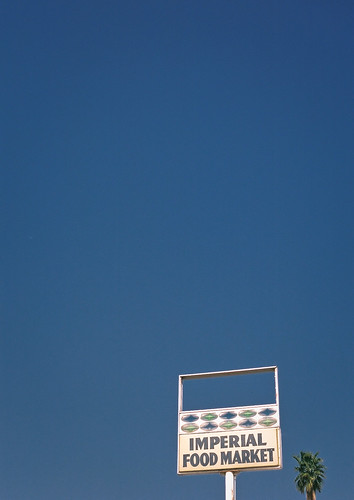
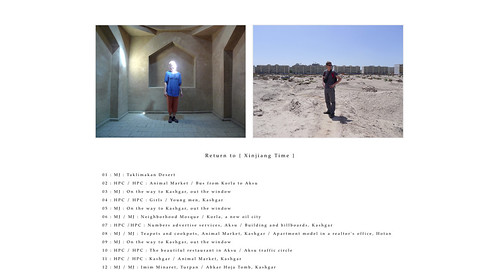
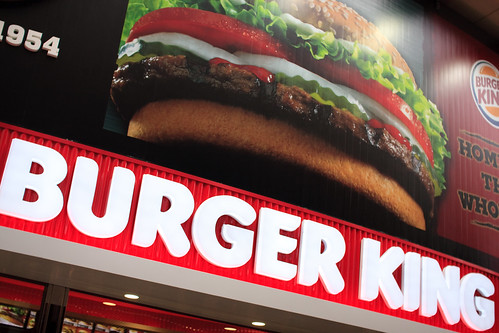


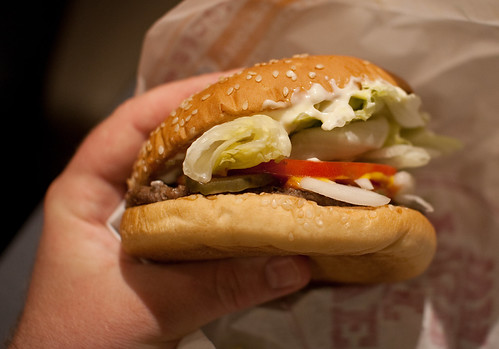
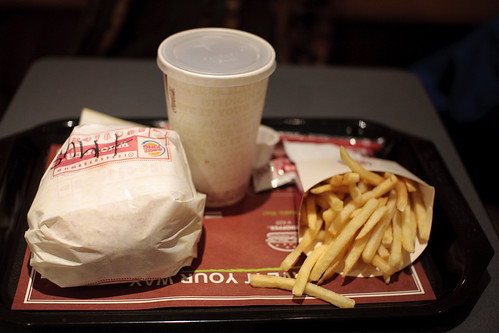


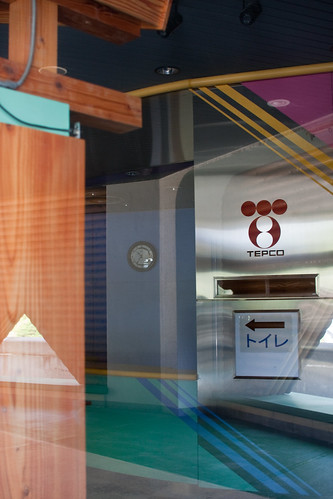
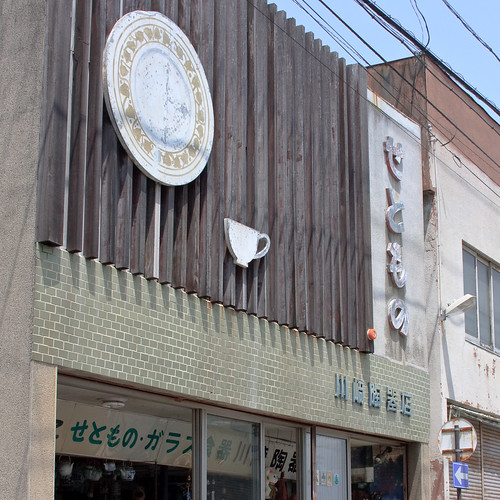
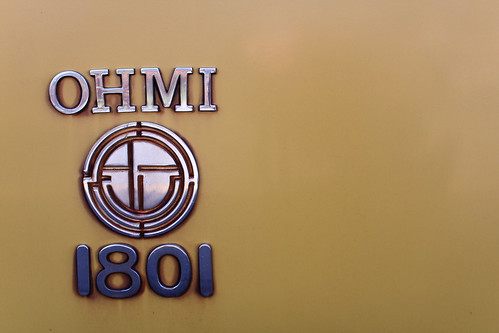
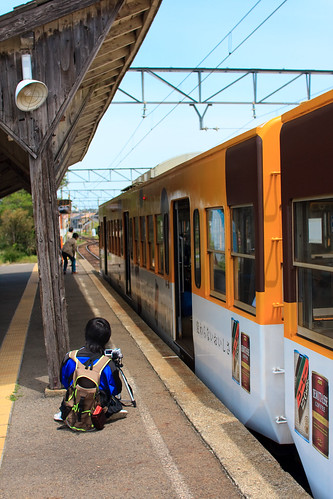

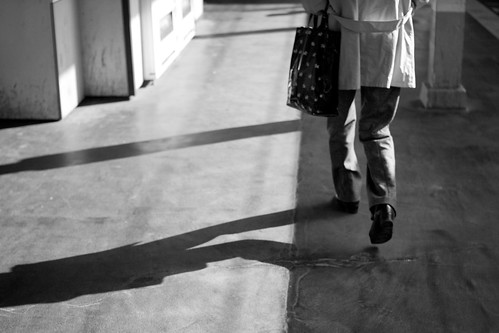


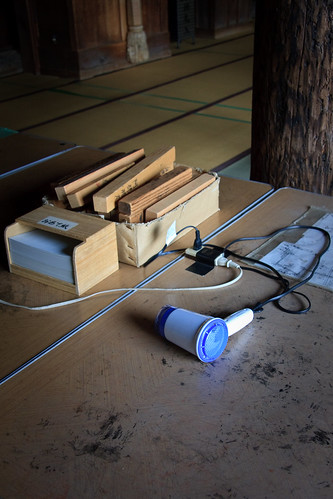
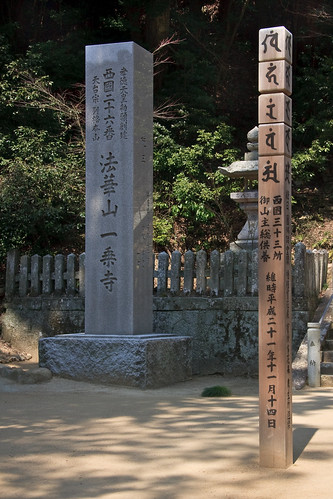
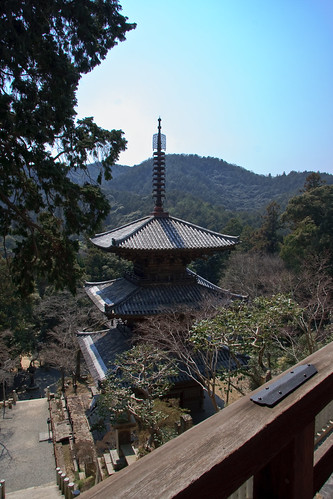
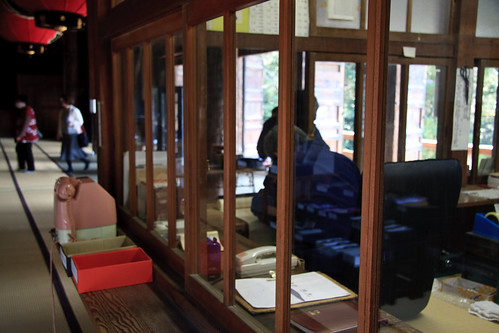
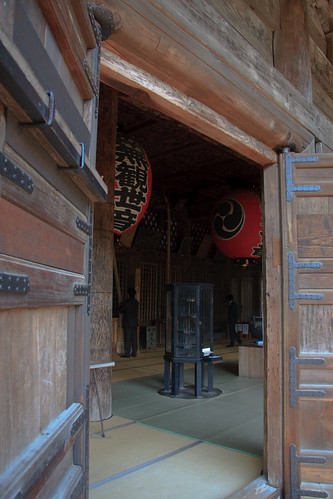
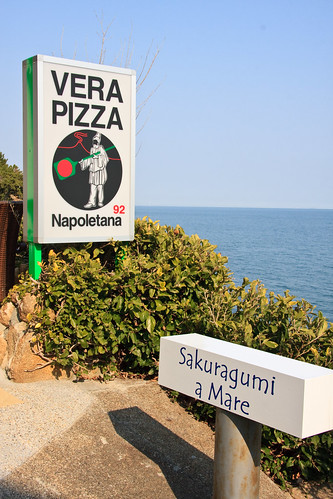
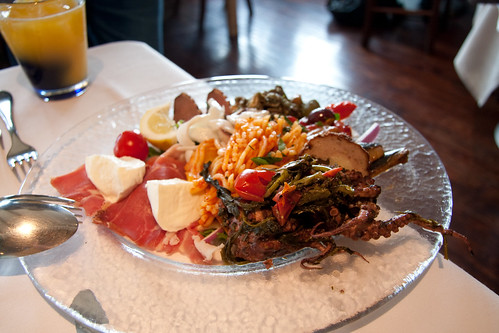


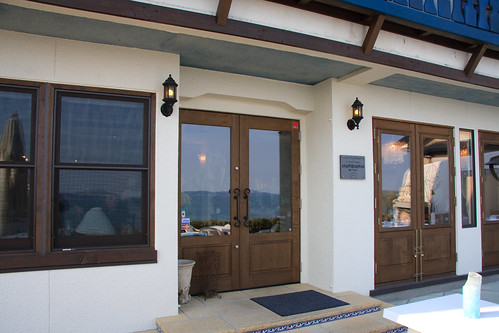
Here densha otaku enjoying the day off are taking photos as my train stops in Hino 日野 station waiting for the southbound train to pass.